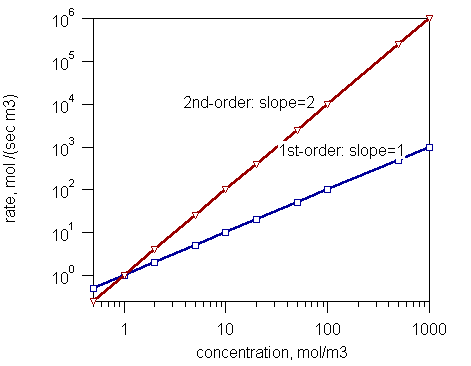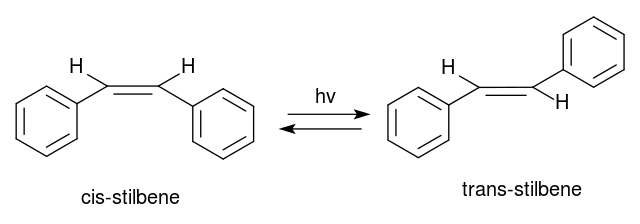Key Difference – Order of Reaction vs Molecularity
Chemical reactions are changes that happen in chemical compounds. It leads to the conversion of one chemical substance to another. The initial compounds that undergo the chemical reaction are called reactants. What we get at the completion of the reaction are products. Order of the reaction is given with respect to a substance; it can be with respect to a reactant, product or catalyst. The order of reaction with respect to a substance is the exponent to which its concentration in the rate equation is raised. The molecularity of chemical reactions expresses how much reactant molecules are involved in the reaction. The key difference between order of reaction and molecularity is that order of reaction gives the relationship between the concentration of a chemical species and the reaction it undergoes whereas molecularity indicates how many reactant molecules are involved in the reaction.
CONTENTS
1. Overview and Key Difference
2. What is Order of Reaction
3. What is Molecularity
4. Side by Side Comparison – Order of Reaction vs Molecularity in Tabular Form
5. Summary
What is Order of Reaction
The order of reaction with respect to a substance is the exponent to which its concentration in the rate equation is raised. In order to understand this concept, we should first know what rate law is.
Rate Law
The rate law indicates that the rate of the progression of a chemical reaction (at constant temperature) is proportional to the concentrations of reactants raised to the exponents that are determined experimentally. These exponents are known as orders of those concentrations. Let us consider an example.
2N2O5 ↔ 4 NO2 + O2
For the above reaction, the rate law equation is given as below.
Rate = k.[N2O5]x
In the above equation, k is the proportionality constant that is known as the rate constant. It is a constant at constant temperature. The brackets are used to express that it is the concentration of the reactant. The symbol x is the order of the reaction with respect to the reactant. The value of x should be determined experimentally. For this reaction, it has been found that x=1. Here, we can see that the order of reaction is not equal to the stoichiometry of the reaction. But in some reactions, the order of reaction can be equal to the stoichiometry.
For a reaction having two or more reactants, the rate law equation can be written as below.
A + B + C ↔ P
Rate = k.[A]a[B]b[C]c
a, b and c are orders of the reaction with respect to A, B and C reactants, respectively. For this kind of rate equations (having several orders of reaction), the sum of the orders of reaction is given as the overall order of reaction.
Overall order = a + b + c

Figure 1: Rate of First Order and Second Order Reactions
According to the order of reaction, there are several types of reactions:
What is Molecularity
Molecularity of a reaction is the number of molecules or ions that participate in a reaction as reactants. More importantly, the reactants considered are the ones that participate in the rate-determining step of the overall reaction. The rate determining step of a reaction is the slowest step of the overall reaction. This is because the slowest reaction step determines the rate of reaction.

Figure 2: A Unimolecular Reaction
The molecularity can be of different types:
What is the Difference Between Order of Reaction and Molecularity?
Order of Reaction vs Molecularity | |
| The order of the reaction with respect to a substance is the exponent to which its concentration in the rate equation is raised. | Molecularity of a reaction is the number of molecules or ions that participate in a reaction as reactants. |
| Relation with Reactants | |
| Order of reaction explains how the concentration of reactants affects the rate of reaction. | Molecularity gives the number of reactants that take part in a reaction. |
Summary – Order of Reaction vs Molecularity
Rate law indicates that the rate of the progression of a chemical reaction (at constant temperature) is proportional to the concentrations of reactants raised to the exponents that are determined experimentally. Order of reaction is given with respect to a reactant. It explains the dependence of reaction rate on concentrations of reactants. The key difference between order of reaction and molecularity is that the order of reaction gives the relationship between the concentration of a chemical species and the reaction it undergoes whereas molecularity expresses how many reactant molecules are involved in the reaction.
Reference:
1. “The Rate Law.” Chemistry LibreTexts, Libretexts, 21 July 2016, Available here.
2. “Reaction Order.” Chemistry LibreTexts, Libretexts, 21 July 2016, Available here.
3. “Molecularity and Kinetics.” Chemistry LibreTexts, Libretexts, 21 July 2016, Available here.
Image Courtesy:
1. “Rateloglogplot” By Fabiuccio~enwikibooks at English Wikibooks – Transferred from en.wikibooks to Commons., (Public Domain) via Commons Wikimedia
2. “Cis-trans-stilbene” By Pancrat – Own work (CC BY-SA 3.0) via Commons Wikimedia
ncG1vNJzZmivp6x7pbXFn5yrnZ6YsqOx07CcnqZemLyue8OinZ%2Bdopq7pLGMm5ytr5Wau2670Z2cq2Wfm3qzscCcq6KnnmKur7CMr6pmpZ%2BhsqTBy5qpoqypZA%3D%3D